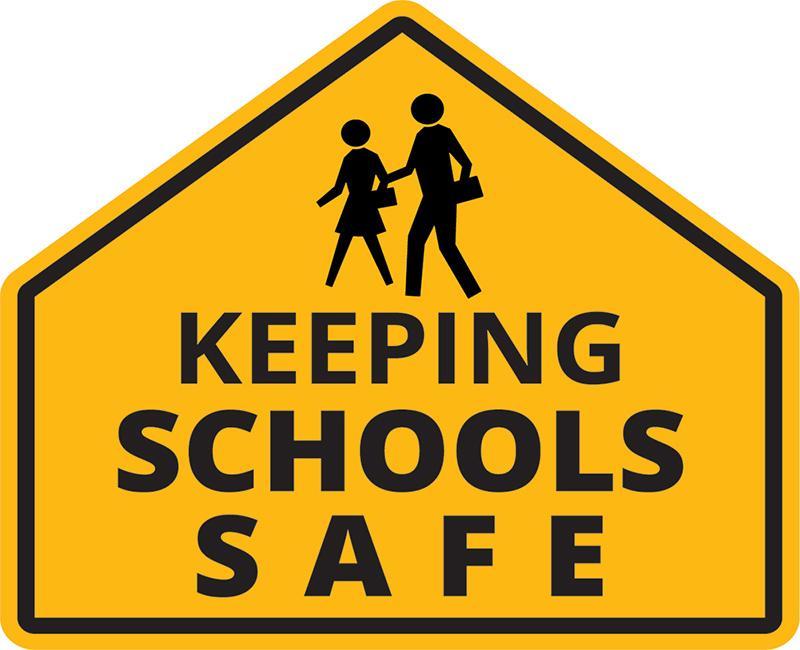School safety is a fundamental aspect of education, ensuring that students, teachers, and staff have a secure environment where they can focus on learning without fear. A safe school setting goes beyond preventing physical harm—it includes emotional, psychological, and cyber safety as well. Schools must implement proactive measures to address threats, such as violence, bullying, mental health crises, and online dangers, to create a supportive learning atmosphere for all.
In this article, we explore the various aspects of school safety, including physical security, mental well-being, bullying prevention, emergency preparedness, and the role of technology in maintaining a secure educational environment.
The Core Aspects of School Safety

School safety encompasses several key areas that ensure students’ well-being both inside and outside the classroom. These include:
1. Physical Security Measures
Physical security focuses on protecting students from external threats, unauthorized individuals, and potential acts of violence. Effective security measures include:
- Controlled Access to School Grounds: Schools should have designated entry points with security personnel or identification systems to prevent unauthorized access.
- Surveillance Systems: Installing security cameras in hallways, entrances, and outdoor areas enhances monitoring and deters potential threats.
- Emergency Lockdown Procedures: Teachers and staff should be trained on lockdown protocols to respond to potential threats swiftly.
- School Resource Officers (SROs): Trained security personnel or law enforcement officers stationed on school premises provide an added layer of protection.
2. Mental Health and Emotional Safety
Ensuring a safe school environment involves addressing students’ mental and emotional well-being. Many safety concerns, including bullying and violence, stem from unresolved mental health issues. Strategies to support students’ emotional safety include:
- Access to School Counselors and Mental Health Professionals: Having trained professionals available for students to talk to about stress, anxiety, or personal issues.
- Anti-Bullying Programs: Implementing educational campaigns to foster kindness, inclusion, and respect among students.
- Stress-Reduction and Mindfulness Programs: Encouraging relaxation techniques such as meditation and breathing exercises to help students manage stress.
3. Bullying and Harassment Prevention
Bullying is one of the most significant threats to school safety, affecting students’ emotional well-being and academic performance. Preventing bullying requires:
- Clear Anti-Bullying Policies: Schools should enforce strict rules against bullying, harassment, and discrimination.
- Encouraging Peer Reporting: Creating a culture where students feel safe reporting bullying incidents without fear of retaliation.
- Intervention Programs: Schools should provide counseling and mediation for both victims and perpetrators of bullying.
4. Emergency Preparedness and Crisis Response
Being prepared for emergencies such as natural disasters, fires, or active threats is crucial for school safety. Schools should:
- Conduct Regular Drills: Fire drills, earthquake drills, and lockdown drills help students and staff respond quickly in emergencies.
- Establish Communication Protocols: Schools must have clear systems for notifying parents and emergency services during a crisis.
- Create Crisis Response Teams: Designated staff members should be trained to handle emergencies and coordinate responses effectively.
5. Cybersecurity and Digital Safety
With the increasing use of technology in education, schools must protect students from cyber threats, including online bullying, hacking, and inappropriate content. Cyber safety measures include:
- Internet Filtering Systems: Schools should block access to harmful websites and monitor online activities.
- Cyberbullying Awareness Programs: Educating students about responsible internet use and the dangers of online harassment.
- Strong Password Policies: Encouraging students to use secure passwords and avoid sharing personal information online.
The Role of Teachers, Parents, and Students in School Safety
School safety is a collective responsibility that involves educators, parents, and students working together to create a secure learning environment.
1. The Role of Teachers and School Staff
Teachers play a crucial role in maintaining safety by:
- Recognizing warning signs of distress, bullying, or violence in students.
- Creating an inclusive and respectful classroom culture.
- Implementing classroom rules that promote kindness and respect.
- Being vigilant and reporting any suspicious activities.
2. The Role of Parents and Guardians
Parents can contribute to school safety by:
- Encouraging open communication with their children about school experiences.
- Monitoring their child’s online activities to prevent cyber threats.
- Supporting school safety initiatives and attending safety workshops.
- Reporting any concerns regarding safety issues to school authorities.
3. The Role of Students
Students must also take responsibility for their safety and that of their peers by:
- Reporting any suspicious behavior or threats to a trusted adult.
- Being an ally to peers facing bullying or harassment.
- Following school safety rules, including participating in emergency drills.
- Practicing responsible social media and online behavior.
Challenges in Maintaining School Safety
Despite schools’ efforts to create secure environments, several challenges persist:
1. Increasing Incidents of School Violence
School shootings, physical altercations, and other forms of violence pose significant threats to student safety. Implementing stricter security measures and mental health support systems can help address these risks.
2. Resistance to Security Measures
Some students, parents, and staff may feel that security measures, such as metal detectors or increased surveillance, create a restrictive environment. Schools must balance security with a positive and welcoming atmosphere.
3. Limited Funding for Safety Programs
Many schools struggle with budget constraints, making it difficult to implement necessary safety upgrades. Schools must advocate for government and community support to improve security infrastructure.
4. The Rise of Cyber Threats
As education increasingly moves online, schools must stay ahead of emerging cyber threats by updating security protocols and providing digital literacy training.
Solutions and Best Practices for a Safer School Environment
To overcome safety challenges, schools can adopt the following best practices:
1. Implement Comprehensive Safety Policies
Establishing clear safety policies and ensuring that all staff and students are aware of them is crucial. Policies should cover physical security, bullying prevention, cyber safety, and emergency preparedness.
2. Promote a Culture of Respect and Inclusion
A positive school climate where students feel respected and valued reduces the likelihood of violence and bullying. Schools should promote diversity, inclusion, and peer support programs.
3. Use Technology for Enhanced Security
Advanced security tools such as visitor management systems, panic buttons, and AI-based threat detection can improve safety measures.
4. Strengthen Community and Law Enforcement Partnerships
Collaboration between schools, local law enforcement, and community organizations can enhance safety efforts. Having school resource officers (SROs) and emergency response teams ensures swift action during crises.
5. Encourage Mental Health Awareness and Support Services
Schools should prioritize student mental health by offering counseling, peer support groups, and wellness programs. Addressing mental health concerns early can prevent potential safety threats.
Conclusion: Prioritizing a Safe Learning Environment
School safety is essential for fostering an environment where students can learn, grow, and thrive without fear. A comprehensive approach that includes physical security, mental health support, bullying prevention, emergency preparedness, and digital safety is necessary to ensure a secure educational setting.
By involving teachers, parents, students, and the broader community, schools can create a culture of safety that prioritizes well-being and academic knowledge success. Investing in proactive safety measures today ensures a brighter and more secure future for all students.


